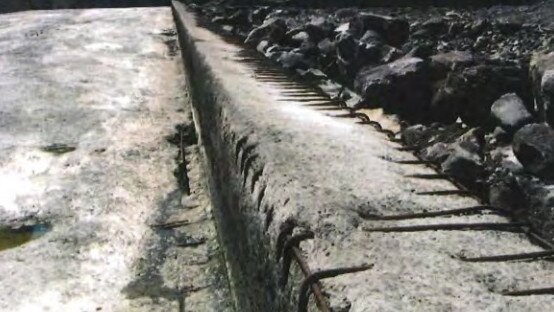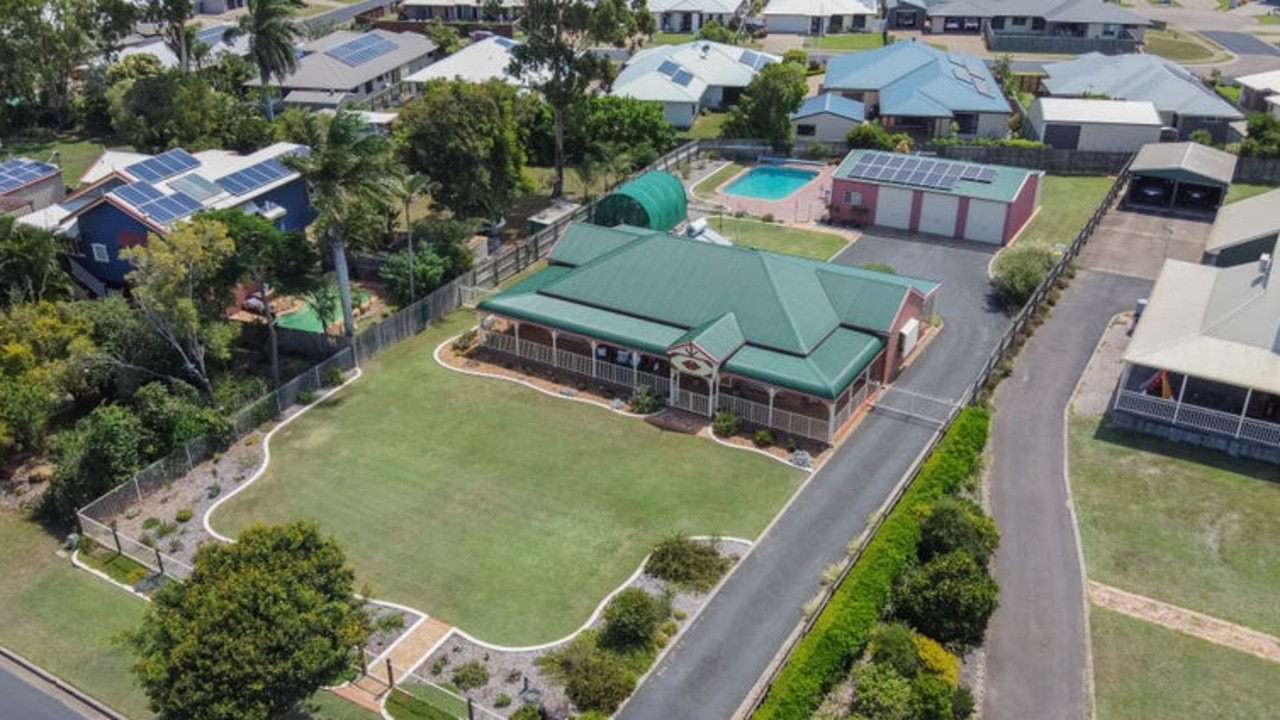Mistakes, missteps, personal conflict behind flawed construction of Paradise Dam
This is the inside story on the project which has been dubbed ‘one of the biggest infrastructure fails in Queensland’.

Bundaberg
Don't miss out on the headlines from Bundaberg. Followed categories will be added to My News.
The revelation that the Paradise Dam wall was beyond repair sparked a round of accusations and apologies that fell short of full accountability to the Queensland public.
Speaking at the January 11, 2024 conference where it was announced the wall would need to be entirely rebuilt 70m downstream, SunWater CEO Glenn Stockton said he was “not in the position for apportioning blame”, preferring to look forward to the delivery of the dam to irrigators.
MORE NEWS: Incurable virus set to explode as mozzies swarm half the state
Apparently anticipating the public’s demand for accountability, ALP Bundaberg MP Tom Smith pointed the finger at former premier Peter Beattie, saying the Palaszczuk government had “inherited” the troubled project from Mr Beattie and that he owed a “personal apology” to the people of Bundaberg.

Mr Beattie soon played his role in what appeared to be a co-ordinated mea culpa that descended into an acrimonious public spat, with Water Minister Glenn Butcher expressing his “disappointment” in the former premier’s tempering of his apology by asking why it had taken 16 years to identify the irremediable issues with the dam.
But a more salient question raised in Mr Beattie’s apology about who should be held directly responsible for the failed construction went without response from the current government.
“I am concerned to ensure Queenslanders know what was wrong with the construction material and the method and if that has been established, what is being done to ensure it never happens again,” Mr Beattie said.
A search for the answer to these questions reveals a chain of missteps and personal conflict among the companies that designed and built Paradise Dam, with further controversy echoing through their involvement in multimillion dollar projects at home and abroad down to the present day.
What is wrong with the Paradise Dam wall?
To understand the problems that have beset Paradise Dam since it was unexpectedly damaged by floods between 2010 and 2013, it helps to go back to the preliminary design proposed by Burnett Water, the state-owned company established by the Beattie government to act as the project developer.
The Burnett Water proposal asked tenderers to submit a design for a roller-compacted concrete dam, a type of dam that became increasingly popular through the last decades of the 20th century for its speed of construction and cost savings.
Whereas traditional dams were constructed with huge slabs of concrete, a long and labour intensive operation, roller-compacted concrete dams were built more quickly from concrete laid down in 30cm layers.

To enable the concrete to be laid down and compressed by rolling crews onsite, the concrete used in RCC dams is typically drier and has a lower cement content than in conventional dams.
These time and cost savings are balanced by disadvantages of RCC dams, which include the possibility of water seepage between the layers amd through the concrete itself due to the low cement content.
The signs of weakness in Paradise Dam following the 2010-2013 floods were initially thought to be due to flawed bonds between the layers, which led to the lowering of the dam in 2019.

But more recent testing by SunWater found serious flaws in the concrete mix used in the dam’s construction.
SunWater found that cement comprised only 2.5 per cent of the dam’s concrete mix, meaning Paradise Dam contained less cement than 99 per cent of RCC dams built around the world.
And to make matters worse, the aggregate, the granular material in the concrete mix that is bound together by cement, was found to contain a high amount of clay.
The combination of low cement and high clay content meant that the moisture that readily seeped through the pores in the cement would cause the clay to swell and contract, making the dam wall dangerously unstable.

The porous nature of the concrete also meant that the cement would leach out and become more acidic, meaning the wall would become progressively weaker and more unstable over time.
All of these problems with the concrete mix led SunWater to conclude that Paradise Dam was a “compromised asset”, which no amount of repair works could rectify.
Who was responsible for the concrete mix used for Paradise Dam?
A SunWater spokesperson said they were “not in a position to provide details on why the dam was built the way it was”, directing all questions about its construction to the winner of the 2003 tender, the Burnett Dam Alliance.
Formed in October 2003, the Burnett Dam Alliance included Burnett Water Pty Ltd and Hydro Tasmania, a state-owned hydropower company specialising in dam design and construction.
Wagner’s Quarries, a subsidiary of Wagner Group, one of Australia’s biggest construction and mining services companies based in Toowoomba, was contracted to perform services for the Burnett Dam Alliance including operating the concrete mixing plant and managing the aggregate stockpile.
The Burnett Dam Alliance competed against a bid by mining giant Thiess in partnership with a US construction firm URS Corporation for the Paradise Dam tender.
One of the key differences between the two bids was the Thiess/URS proposal included a concrete mix with high cement content, more than double the amount included in the Burnett Dam Alliance proposal.
As noted in the Commission of Inquiry Report, cost savings was one of the factors behind the state government awarding the tender to the Burnett Dam Alliance.
“The choice to use (low cement concrete) for the Dam was made in part for financial reasons (which) had important consequences,” the report said.

Hydro Tasmania led the design of the dam, taking the primary responsibility of ensuring that the construction of the dam stayed within the guardrails laid down by the original plans.
In 2003, when Paradise Dam was being designed, only four RCC dams had been constructed in Australia, and none of the engineers working for Hydro Tasmania had designed an RCC dam before.
To make up for this lack of experience and knowledge, Hydro Tasmania contracted expertise from the US, and the Commission of Inquiry found the Burnett Dam Alliance leant heavily on that advice.
Other Australian-based advice sought by Hydro Tasmania on the RCC concrete mix design advocated for the use of fly-ash in the aggregate, a by-product of coal combustion commonly used in concrete.
This conflicted with the US-based advice which thought fly-ash contributed little to the strength and durability of concrete and added only higher costs to the construction.
While the terms of the disagreement sound dry and technical, the Commission of Inquiry saw correspondence suggesting emotions and frustrations were high when it came to the differing views.
The US advice then ruled the day by the time the dam construction was completed in 2005.
At the completion of the initial testing phases of the project, a concrete mix with low cement content (60 to 65kg/m3) was adopted.

In place of the fly-ash recommended by the Australian expertise, rock from quarrying around the dam site on the Burnett River was used for the aggregate.
The Commission of Inquiry report notes that Wagner’s Quarries raised concerns in December 2003 about the strength and chemical composition of the rock being used for the aggregate, but no action was taken.
A few months later, in June and July 2004, the Hydro Tasmania dam design team wrote a series of emails to Wagner’s Quarries expressing their own concerns about the way the company was managing the aggregate.
The problems detailed in the email included that the aggregate was too dry, and too many fine particles in June being overcorrected to too many coarse particles in July.
The Hydro Tasmania emails stated that if left unrectified the problems noted would affect “the efficiency of the cement (strength per kg of cement added)” due to the concrete being too porous.
The US sourced advice pointed the finger at Wagner’s Quarries for any problems with the aggregate when he told the Commission to “contact Wagner who made the aggregates and RCC” when asked how the quality of the aggregate could be tested.
It is not suggested that the Wagner Group was responsible for the design of Paradise Dam, and Wagner Group denies any responsibility for the selection or composition of the concrete used in the dam’s construction, saying they were responsible for the manufacture of materials in accordance with contracted specifications.
Hydro Tasmania declined to comment on accountability for the failings of Paradise Dam, saying the company had had no involvement with the dam since 2012.
What are they doing now?
The partnership between Hydro Tasmania and Wagner Group continued after the completion of Paradise Dam, with the two companies collaborating on another Queensland project - Wyaralong Dam - which was completed in 2011.
In a troubling similarity to the Paradise Dam, the concrete used for Wyaralong Dam contained a high amount of clay.

But a significant difference between the Wyaralong Dam and Paradise Dam specifications suggested that Hydro Tasmania had learnt some lessons from the construction of Paradise Dam.
The concrete mix for Wyaralong Dam included fly-ash in the aggregate, contrary to the views of the US advice to the Paradise Dam project, and a cement content of 85kg/m3, far higher than that used in the Paradise Dam.
The Queensland Department of Water said Wyaralong Dam met the “rigorous safety requirements” of ANCOLD, Australia’s dam engineering peak body, and did not respond to questions asking whether the results of Sunwater’s testing of the Paradise Dam materials had been forwarded to Seqwater, the owner of Wyaralong Dam.
“It is important to understand each dam is unique and many roller compacted concrete dams operate safely around the world,” the RDMW spokesperson said.
MORE NEWS: 5m sales: How sparky’s search for a big hat became a fashion sensation
Further controversy beset Hydro Tasmania in 2020, when the ABC reported it had proceeded with work on a Ugandan hydropower project despite initially assessing it to have a high environmental and social risk potentially impinging on the human rights of surrounding communities.
Hydro Tasmania was contracted by Chinese government-owned PowerChina for the project.





